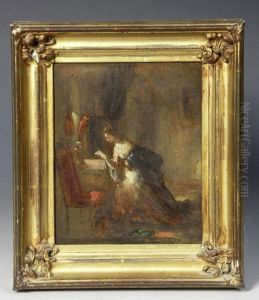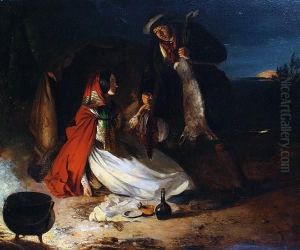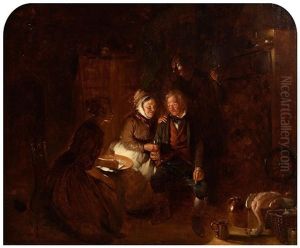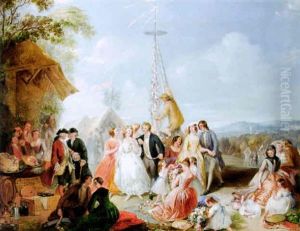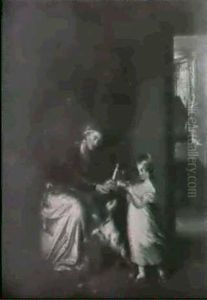Thomas Clater Paintings
Thomas Clater was an English portrait painter, born in 1775. Not much is widely known about his early life and training, but he is recognized for his work during the late 18th and early 19th centuries. Clater primarily gained recognition for his portrait paintings, which were well-regarded during his time for their attention to detail and character portrayal.
Clater's career as an artist unfolded during a period of considerable social and artistic change in Britain. The late 18th century was marked by the tail end of the Rococo movement and the rise of Neoclassicism. Meanwhile, the early 19th century saw the advent of Romanticism, which began to take hold in artistic circles. Within this context, Clater managed to carve out a niche for himself as a portraitist.
Despite his skills and the quality of his work, Thomas Clater did not achieve the lasting fame of some of his contemporaries, such as Sir Thomas Lawrence or Joshua Reynolds, who were prominent figures in the Royal Academy at the time. Nevertheless, Clater's portraits were appreciated for their lifelike representation and the insight they provided into the personalities of his subjects.
Clater's clientele were primarily from the middle class, which was expanding during this period due to the ongoing Industrial Revolution. This demographic shift also meant that there was a growing market for portraits among those who were not aristocrats but still wished to have their likenesses captured as a sign of their rising status.
Throughout his career, Clater exhibited at the Royal Academy and the British Institution, showing that he was an active member of the artistic community. However, records of his life and work are scarce, and much of what we know about him comes from the paintings he left behind.
Thomas Clater died in 1829, leaving behind a modest but meaningful legacy in the form of his portraits. His works are now considered to provide a valuable glimpse into the faces and fashions of the British middle class during a transformative period in the nation's history. Collectors and art historians today may study Clater's paintings not only for their artistic merit but also for their historical significance.
